#How to Start Organic Farming in India
Text
How to Start Organic Farming in India | Harisharan Devgan
Starting organic farming in India involves several steps and considerations. Here is a general guide to help you get started:
Research and education: Begin by learning about organic farming practices, principles, and regulations. Understand the benefits, challenges, and market potential for organic produce. Attend workshops, seminars, and training programs to gain practical knowledge.
Site selection: Choose a suitable location for your organic farm. Consider factors like soil quality, availability of water sources, climate, and proximity to markets. Conduct soil tests to assess its fertility and potential for organic cultivation.
Organic certification: Familiarize yourself with the organic certification process in India. Organic produce must meet the standards set by the National Programme for Organic Production (NPOP) or other recognized certification bodies. Contact a certification agency and follow their guidelines to obtain organic certification for your farm.
Farm planning: Develop a comprehensive farm plan that includes crop selection, rotation, and intercropping. Consider the market demand, crop compatibility, and the soil's natural characteristics. Plan for proper irrigation, pest and disease control, and nutrient management strategies.
Seed selection: Choose organic, non-GMO (genetically modified organism) seeds from reliable sources. Preferably, use indigenous or local seed varieties adapted to the region's climate and soil conditions.
Soil fertility management: Focus on building and maintaining soil fertility through organic methods. Utilize techniques such as crop rotation, green manure, composting, and organic fertilizers. Minimize or eliminate the use of synthetic chemical fertilizers, pesticides, and herbicides.
Pest and disease management: Adopt integrated pest management (IPM) practices to control pests and diseases. Encourage natural predators, use organic pesticides derived from plants or biopesticides, and practice crop rotation to reduce pest and disease pressure.
Irrigation: Employ efficient irrigation methods such as drip irrigation or sprinkler systems to conserve water. Monitor soil moisture levels regularly and irrigate accordingly to avoid overwatering or under watering.
Marketing and sales: Establish a marketing strategy for your organic produce. Identify potential buyers such as organic stores, local markets, restaurants, or direct consumer sales. Participate in farmers' markets, create an online presence, and build relationships with organic food enthusiasts and organizations.
Networking and support: Connect with local organic farming associations, farmer groups, and government organizations that promote organic farming. These networks can provide valuable guidance, support, and access to resources, grants, and subsidies.
Continuous learning and improvement: Stay updated on the latest organic farming techniques, research, and innovations. Attend workshops, join online forums, and engage in knowledge-sharing platforms to enhance your farming practices.
Remember, organic farming requires patience, dedication, and continuous learning. Start small and gradually scale up your operations as you gain experience and confidence.
#How to Start Organic Farming in India#agriculture#farmingtechnologies#agriculturetechnology#farming#cannabisresearch#organicfarmerofmillionaire#agripreneur#agriculture technology#farmer#organicfarmer
0 notes
Text

Weaving the Future of Italian Silk with Nido di Seta
Fostering a new silk supply chain in Italy
The history of silk spans thousands of years, inextricably woven into Gucci’s own heritage and found at the heart of the House’s most iconic creations. Though this material embodies the excellence of Made in Italy craftsmanship, its production has been almost entirely lost in the country.
Gucci is supporting its reintroduction in Italy with a pilot project as part of the House’s commitment to promoting regenerative agriculture practices – a key pillar of its nature-positive approach – and where sustainability and innovation go hand-in-hand in silk production and cultivation. An entirely new technique in the silk supply chain is being championed – from the planting of mulberry trees in abandoned landscapes and improving these rural areas through organic farming, to developing new technology for the manufacturing processes, and upskilling farmers and artisans in their silk craft. This initiative will allow the House to source silk from organic farming practices in Italy that can be used in the House’s future collections.
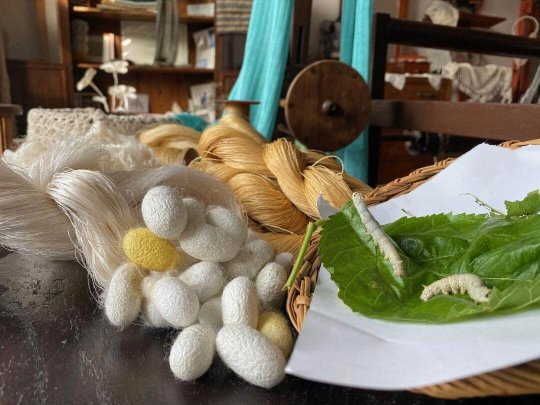
A Cultural Renaissance Starts at the Il Nido di Seta Farm
Nido di Seta is a farm located in the small hillside village of San Floro in the Calabria region of southern Italy where three young friends, Miriam Pugliese, Giovanna Bagnato, and Domenico Vivino have come together to bring local traditions back to the fore. After their paths diverged, the three came together again and decided to build their future in this small village of 600 inhabitants and restore the traditional mulberry tree planting and cultivation needed for the rearing of silkworms. Historically, San Floro was famous for a very significant production of raw silk in the 17th century, though this heritage had been completely lost in modern times.

“We keep a reproduction of the property registration map of mulberry groves dating back to 1500. All of Calabria was covered with them and some mulberry groves even dated back to the year 1000. In every Calabrian village and city there is a district name that recalls the mulberry trees in the local dialect and today it’s a rule of thumb that every piece of land, every property, has one or more mulberry trees on it. Regarding the production of the cocoon, however, there are documents showing that starting from the beginning of the 19th century, San Floro produced around 1,500 kg of cocoons every year.”

The only surviving elements of this rich legacy were the 3,000 abandoned mulberry trees and the memory of the elderly villagers. Miriam and her friends brought back the production of silk, rewinding the threads of history and travelling across the world to exchange best practices with silk institutes in Thailand, India, Switzerland, and France. The friends supported the creation of a small group of local women artisans, each working from a home laboratory based in their own small village. As part of its development, they trained people interested in their new, sustainable production model and also brought thousands of tourists from all over the world to visit their farm to experience how silk is produced first-hand.
Gucci Supports the Project
At the beginning of 2022, a meeting with Gucci saw the future of the friends’ farm grow even brighter. Thanks to this collaboration with Gucci, Miriam and her friends have undertaken an even greater ambition. The goal of the pilot project is to create a new silk-farming supply chain, including the production of Gucci’s first scarves made with silk thread that comes from local organic farming practices over the next years. Using this pilot as a best practices example, Gucci will also be able to look into the expansion of the farmers involved, promoting the adoption of regenerative silk production, ultimately bringing the abandoned silk supply chain in the region back to life. With scientific partners CREA, the Italian public research institute specialized in silkworm breeding and rearing technologies, and Ongetta, the producer of silk yarns, the project’s future, and the multi-benefits it creates, is very promising.

A Positive Impact on the Community and the Land
The initiative with Il Nido di Seta will allow for the rediscovery of traditional artisanal skills and create job opportunities in marginalized areas, which have a high risk of depopulation due to the lack of available jobs, which is critical to keep the countryside flourishing. The collaboration will also support Miriam in her objective to maintain the network of local artisan women and Il Nido di Seta’s traditional techniques. Culturally, there is a local Silk Museum to preserve this heritage of silk’s history and traditions, and the three friends have also created an Academy to guarantee the passing on of this ancient knowledge to the next generations of artisans.

Environmentally the project gives back to nature through the planting of mulberry trees, improving the condition of the soil and increasing its ability to sequester carbon from the atmosphere. The tree’s fruit and the residue from the silk production can also be transformed into by-products in a great variety of ways: from jam to cosmetics, encouraging a circular economy through using the resources above and beyond those from the primary silk producing focus.
“With our work we are preventing a tradition, that was a great source of pride for our region, from disappearing into thin air. We are creating an economy taking lessons from our past and now the next exciting challenge is to see the traditions of our ancestors on the international fashion runways,” says Miriam.
Source: gucciequilibrium
Follow us on Instagram, @calabria_mediterranea
#calabria#italy#gucci#silk#nido di seta#south italy#southern italy#agriculture#san floro#italian#made in italy#craftmanship#cocoon#cocoons#mulberry trees#mulberry tree#mulberry
35 notes
·
View notes
Photo


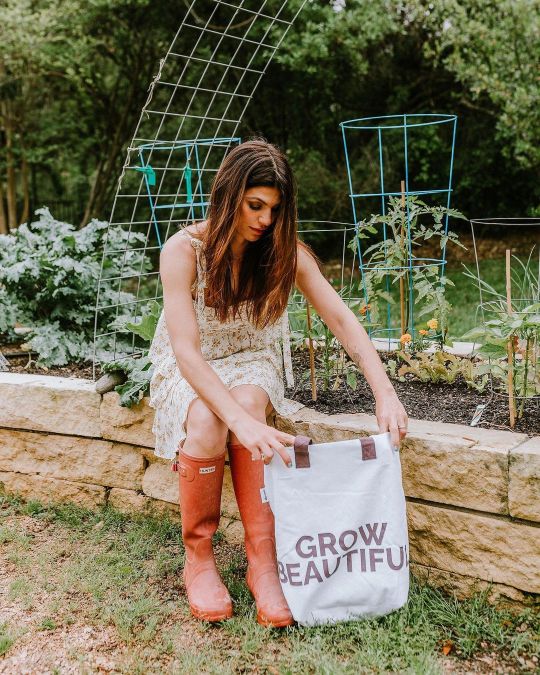
genpadalecki: April may officially be Earth Month, but the reality is every month should be Earth Month. And I love that @Davinesoffical is working to make that a reality. 💚 I’m so excited to team up with them again this year. They are always doing amazing things to help the planet, starting with regenerative farming; and you all know how much I love getting my hands dirty in my garden. This month @davinesofficial has a limited edition Grow Beautiful Tote; it’s 100% carbon neutral, the perfect size for zero waste shopping, and the most amazing part is that the cotton that this tote is made out of is 100% rain-fed and harvested by the Khond tribe in India.
Let’s grow together and support regenerative organic agriculture! 🌱🌎
#davinespartner
22 notes
·
View notes
Photo










World Milk Day
Start your day with a glass of calcium-rich milk, visit a local dairy farm, or see what milk alternatives like soy, oat, or almond milk you might enjoy.
It’s a well-known fact that milk is rich with calcium, a mineral that promotes healthy teeth and bones. June 1st is the date that has been set aside to celebrate Milk Day. And, of course, this is a celebration that can take place anywhere in the world, given that milk is a global food!
The use of milk in food and drink has been happening for thousands of years. As most people can appreciate, milk is an integral part of most people’s daily lives, and there’s an entire industry that revolves around it as well.
Milk is a liquid food rich with nutrients like calcium. It’s a food product that is primarily used by mammals during infancy. Although, in the case of humans, people tend to consume it in adulthood, as most adult humans can digest the lactose in milk.
Of course, milk isn’t only available for drinking. It’s an essential ingredient for dairy foods such as butter, cream, ice cream, and cheese. Milk can also be found as an ingredient used in other types of foods, such as bread, cakes, cereal, desserts and so much more.
There is no denying that milk has become a mainstay of most people’s diets today. It’s also one of the cheapest food products to buy, given the industrial scale of milk production in the world. Some of the largest producers of milk are the United States, India, and China.
History of Milk Day
Milk Day became a globally celebrated event on June 1st, 2001. The global celebration, in general, can be traced back to the United Nations (UN). In particular, the FAO (Food and Agriculture Organization) of the UN has been responsible for organizing and marketing World Milk Day throughout the globe.
More than two decades ago, the FAO proposed a global Milk Day to recognize the importance of milk and the role that it plays in our world. In addition, this day was also created to provide direct focus to the milk industry and publicize the various activities connected with it. In fact, the dairy industry supports the livelihoods of approximately 1 billion people throughout the world!
But even before this day was created in 2001, Milk Day was celebrated by some other nations throughout history. In the British Isles, for example, a Milk Day celebration (“Imbolc” – Celtic for “milk”) took place in the pre-Christian era.
Considering the fact that over six billion people worldwide consume milk and dairy, it’s no surprise there was a need to celebrate this healthy, delicious beverage!
How to Celebrate Milk Day
June 1st is a day that many people may want to write their diaries. Milk plays such a significant role in the world that should certainly be celebrated in style!
But what can be done to celebrate such a momentous occasion? Try out some of these ideas for enjoying Milk Day:
Get the Day Started with a Glass of Milk
Why not celebrate today with a glass of fresh, cold milk in the morning to kick-start the day?! But don’t stop there. How about enjoying a big bowl of cereal full of delicious milk?
Of course, after drinking that glass of milk, don’t forget to snap a photo of that beautiful milk mustache! Share it with the world on social media to remind everyone else to enjoy Milk Day too.
Join an Official Milk Day Celebration
As a worldwide event, Milk Day comes with all kinds of official opportunities to celebrate! In 2020, more than 400 Milk Day campaigns took place in over 68 countries all over the globe, so there should be plenty to join in with again this year. Here are some events that have taken place in previous years:
World Milk Day Milk Donation. Happening in New York State, USA, several organizations have gotten together to provide a free gallon of milk to the people in their local community who visit a dairy farm.
Live Recipes by Renowned Chefs from Around the World. This live Facebook event has been hosted by Amul, India, which is the country’s largest dairy brand, with the intention of showing the importance of milk throughout different countries and cultures.
International Dairy Federation Raise a Glass Event. Hosted by the IDF in Brussels, Belgium, this event involved hosting a toast to milk from people all around the world.
Check the World Milk Day website to get access to all the needed information to make plans for this day.
Visit a Local Dairy or Farm
For those who have some extra time, especially those with kids who are ready to learn, consider visiting a local dairy to learn the process of milking cows and collecting the milk. This will also lead to learning about pasteurizing and homogenizing milk, methods used to filter milk and keep it long-lasting.
If there are no cow farms nearby, consider visiting a smaller farm that has goats. It’s still possible to learn about everything milk-oriented but may be more accessible because they might be smaller and locally owned.
Enjoy Other Milk Products
For lunch, why not have a mozzarella or Margherita pizza and drink a glass of chocolate milk to wash it down? After that, those who are still feeling hungry could always have some delicious ice cream for dessert!
Other options for enjoying milk products on this day (and every day!) include yogurt, sour cream, butter, custard, cream and all of the recipes that can be made from them.
Try a Milk Alternative
For folks who have trouble digesting dairy easily, why not try other non-dairy milk alternatives? Here are some popular options:
Soy Milk. A favorite as one of the early milk alternatives, this one is made from soybean plants that grow fairly prolifically in many places.
Almond Milk. Made by crushing almonds and blending them with water, and then straining out the mix to remove any solids that are left, this nutty milk is filled with protein.
Coconut Milk. This one uses the white, fleshy part of the coconut, grating it and soaking it in water. The cream rises and is skimmed off, then what’s left is strained to extract the coconut milk.
Whether with a milk product or a dairy alternative, celebrating World Milk Day can be loads of fun!
Source
#Banana Cream Pie#Strawberry Cheesecake Milkshake#Pecan Praline Milkshake#travel#vacation#food#restaurant#Coconut Cream Pie Cheesecake#USA#dessert#Pecan Pie#Peach Cobbler#ice cream#Fried Cheesecake#Fried Ice Cream#Custard Pie#summer 2022#original photography#1 June#World Milk Day#WorldMilkDay#drink#international day
3 notes
·
View notes
Text
Worldbuilding: White Gold
If you want conflict in your story, you don’t need to invent political plots or conspiracies. You just need to look for the one thing in your setting everyone needs, and the Evil Plots will appear. Consider the case of salt.
The history of human civilization is, to a great extent, the history of salt. Ice makes it in there too, especially once we worked out powered ways to refrigerate and freeze food, but mostly salt.
Three main reasons for this. First, salt is one of the best, simplest, non-temperature-dependent ways to preserve food. If you can’t put food by and build up a surplus, you can’t get past bare survival, much less build villages and cultures that write down their rituals, recipes, and raunchy jokes.
Second, plain old ordinary salt is useful for all kinds of chemical reactions. Tanning, dyeing, soap-making, mining and alloys - all of these use salt. Modern industry uses most of the salt produced worldwide. Look up organic chemistry if you want the gritty details, that stuff’s scary.
Third, humans need salt in their diet. It may be hard to imagine in grocery stores full of processed food and salty snacks, but for most of history, if you didn’t live right on the seashore, getting enough salt to stay healthy could be an uphill battle.
And here’s where some of the annoying aspects of civilization kick in. Specifically, governments hungry for Ever More Tax Money. Since everyone needs salt, governments throughout history have concluded that by taxing and controlling salt, they get everyone to pay taxes. Fair, right?
...I will pause here to let readers stop laughing hysterically, and/or retrieve their rolled eyes from under the sofa where they’re picking up dust bunnies.
Yeah. Not so much. Historically the people who most need to use salt to store food as a hedge against disaster are those too poor to afford getting fresh food when they want it. If you’re rich you can have fresh meat slaughtered, fresh fish hauled in water-baskets inland, fresh cherries air-mailed by pigeon post for a banquet.
(True story. A guy in ancient Persia proving a point about how fast he could get news across the Empire. Enemies took the hint.)
Rich people don’t have to spend as much money on salt. But if you sell salt, to people who have to have it? You can make out like a bandit.
(According to Everyday Life in Joseon-era Korea, this was the actual historical cause of many people turning bandit. They couldn’t afford enough salt to stay legal and survive.)
It runs through history like clockwork. Governments want money, they take over the production of salt, they farm out the actual work to people who can bribe their way into running it, the quality goes down, the price goes up, people make and smuggle it illegally... and there’s never enough. If you want some more recent history, look at British India. The government made it illegal for native Indians to make their own salt. This was part of what Gandhi used to crack them. (There were plenty of other things wrong, but salt was the one that affected your average householder trying to get by. Messy.)
If your story is set any time prior to modern day, salt is an important background detail. Nations go to war for salt. Beggars steal for it. People travel to find it, mine it, boil it from brine, and so much more. This Wikipedia article on salt in Chinese history lays out a lot of historical shenanigans, and if your library lets you borrow Mark Kurlansky’s Salt: A World History, even better. This is history with ordinary people attached, meaning excellent story fodder.
But your story doesn’t have to use salt for this. Just anything that a lot of people need, and will pay for. If you want your characters going up against villains like corrupt government officials or greedy merchants - here’s a place to start looking!
17 notes
·
View notes
Text
How to Choose the Best Fertilizer for Your Crops
As a farmer, you want to ensure that your crops are growing healthy and strong. One way to do this is to choose the right fertilizer. With so many options available, it can be overwhelming to decide which one to use. In this blog post, we will discuss how to choose the best fertilizer for your crops and why you should consider purchasing from an agri store online in India.

Know Your Soil Type: Before choosing a fertilizer, it is important to know the type of soil you have. Different soils have different nutrient levels, so you need to choose a fertilizer that will supplement your soil’s deficiencies. For instance, if your soil lacks nitrogen, choose a fertilizer that is high in nitrogen. BookMyCrop is a leading one-Stop online destination for agriculture produces online in India that offers a wide range of agricultural produces.
Consider Your Crop Needs: Different crops have different nutrient requirements. For example, fruiting crops such as tomatoes and peppers require more phosphorus, while leafy greens such as lettuce and spinach require more nitrogen. When choosing a fertilizer, make sure to consider the specific needs of your crops.
Choose the Right Type of Fertilizer: There are different types of fertilizers available, such as organic and synthetic. Organic fertilizers are made from natural materials and are slow-release, providing long-lasting benefits. Synthetic fertilizers, on the other hand, are made from chemicals and provide quick-release benefits. Consider your farming practices and the needs of your crops to choose the right type of fertilizer. With our easy-to-use platform, we make it easy for you to get the products you need, whenever you need them. So why wait? Browse our collection today and start enjoying the agriculture produces in Gujarat!
Read the Label: When purchasing a fertilizer, make sure to read the label carefully. The label will tell you the nutrients present in the fertilizer, the application rate, and the recommended frequency of application. Make sure to follow the label instructions for best results.
Consider Purchasing from an Online Agriculture Store in India: With the rise of online agriculture stores in India, it has become easier for farmers to purchase fertilizers and other agricultural products. Online stores offer a wide range of products, competitive prices, and the convenience of doorstep delivery. Plus, you can compare prices and products from different brands to make an informed choice.
In conclusion, choosing the best fertilizer for your crops requires careful consideration of the soil type, crop needs, and type of fertilizer. By reading labels and purchasing from an online agriculture store in India, you can ensure that your crops are getting the right nutrients for healthy growth.
#online agriculture companies#agriculture produces online#online agritech companies#online agriculture store#agriculture companies#online agri market#agriculture industry#kisan mandi#agri store online#agritech companies#agriculture products online#krishi market#krishi bazaar#online crop seeds#crop seeds online#bookmycrop
5 notes
·
View notes
Text
Good news for women

On Sept. 30, 1993, at 3:56 a.m., a deadly earthquake shook Latur and Osmanabad, districts in the western Indian state of Maharashtra. It killed 10,000 people and demolished 52 villages.
While many nongovernmental organizations were involved in the immediate rescue and relief work, there was one group that worked a little differently. It focused on efforts that engaged with women from affected communities and aimed to ensure their long-term wellbeing. The Swayam Shikshan Prayog (SSP), established four years later, began its journey by going door-to-door after the earthquake, meeting thousands of women. The group trained the women to become farmers and entrepreneurs, enabling them to become financially independent and rise above the adversity and loss they'd encountered.
Today, Swayam Shikshan Prayog is one of four winners of the Local Adaptation Champions Awards, organized by the Global Center on Adaptation (GCA), that is being announced at the COP27 climate summit in Sharm El-Sheikh, Egypt.
The awards recognize community-led efforts to adapt to the negative impacts of climate change. Winners will receive €15,000 to help their further their work. In an interview with NPR, SSP Director Upmanyu Patil shares significant moments from his journey.
This interview has been edited for length and clarity.
You've helped around 300,000 rural women from across India adapt to climate change. How did your journey begin?
It began with our relief efforts during the Latur earthquake.

Prema Gopalan was the founder of SSP, but unfortunately we lost her last March. I've been working with Prema and the team since 1993. I took over operations after she passed away. In those early days, we worked largely with disasters — the Gujarat Earthquake [2001], the Tamil Nadu tsunami [2004], floods in Bihar [2007] and in Kerala [2018]. We're working more extensively in three Indian states now — Kerala, Bihar and Maharashtra.
What do you focus on during the aftermath of a climate disaster?
Our focus is on restoration of livelihoods, especially for women. While relief efforts are needed in the immediate aftermath, long-term rehabilitation is our goal. We support them financially, so they can revive any business ventures that were lost as a result of these disasters. In some cases, we provide training so they can gain more skills that will help them set up entrepreneurial ventures. We are actively engaged with communities 3 to 4 years after a disaster, and even post that we continue to work with communities, helping local women generate more income.
Why did you start working on climate-resilient agriculture initiatives?
There were many farmer suicides in Marathwada [in the western Indian state of Maharashtra] when we worked there in 2012-15. When we surveyed the area, we realized that farmers there were planting only a single cash crop like sugar cane or cotton [crops produced only for their commercial value]. This was a problem, because if there was a climate-related disaster and the crop failed, they could not sell it and neither would they have money to buy food. We realized that there were mounting losses in the process, and that was causing great distress [to farmers]. What they needed most was food security. Being an organization with a mission to empower women to take on decision-making roles in their families and communities, we knew that this could come only with economic empowerment, because a breadwinner is a decision-maker. So we began to speak with these families, suggesting that they allocate a piece of their land — say about one-fourth or a fifth — for women to cultivate food crops. We provided training in organic farming, helping them sow pulses, grains, vegetables, fruits.
Did farmers always cultivate a single cash crop in this area?
No, they didn't. If you go back 25 years ago, people sowed multiple crops, ensuring food for their families and communities. Things changed when farming became commercialized, driven by market forces instead of primary needs. India's green revolution of the 1960's, which ushered in pesticides and fertilizers for greater yields, did a lot of damage too. We're trying to get communities to go back to traditional practices. We are mining the knowledge of elderly people in these communities, checking with agricultural departments at local universities to see if these traditional practices are backed by science and if they can come back. For instance, practices such as sowing seeds from native plants around your own home, creating your own compost from agricultural waste, and creating bio-fertilizer by using leaves.
Was it hard to make that transition to food crops and convince families to give away that land?
Initially it was, but we tell them that it's for their own food security. They can do whatever they want with the rest of the land. We ask them to involve women in growing their food. We've faced challenges in two areas. Many don't believe that organic farming can give you the same yields as farming with the use of chemical fertilizers. And many men don't think women can farm efficiently, even though women do a lot of manual labor on farms. They don't believe that she can take charge of the sowing or be a decision-maker.
How did you go about changing mindsets?
It takes time, but we reason with them. We show them how organic farming costs far less, when compared to the high costs of chemical fertilizers. And with 2 to 3 years of training, we prove that women can build their capabilities and take lead in their agricultural sector, just as they have done in sanitation and health. Getting [communities] to believe in this is a challenge in the initial phase.
Once women grow food for their families, what's the next step?
Once they secure food for their families and they have excess, the next challenge is finding a place to sell their extra produce. We link them to markets, and try to secure better prices for them. It's a challenge too, because traditional marketing methods require packaging, certification [and] branding or you won't get premium prices. The women work hard to produce organic food crops, but because of this, they often can't sell at the prices that justify that effort. They are unhappy about that.
Is there anything you do to ensure that they get fair prices?
We have started women farmer producer companies [where women farmers are partners, a system with collective ownership and joint investment]. They are involved in cultivating grains and pulses, but also in selling dairy [and] poultry. These allied activities ensure their incomes.
How does climate change affect their daily lives and their farming?
There are a lot of weather-related changes that we're seeing in recent years. For instance, earlier, the rains would come in mid-June, and remain till mid-October. People do their sowing and harvesting at this time. By February, it's time to sow the summer crop. But now, the rains come only in mid-July, and these are torrential, heavy rains. Then they stop abruptly, and farmers lose their crops. Farming is their only source of income and it is threatened by climate change. It's very distressing and women are especially vulnerable. Climate change has an impact on everything — health, economic conditions, water sources and food security.
You encourage "clean energy initiatives" in local communities. What does that involve?
In 2005, British Petroleum wanted to understand the energy needs in rural markets. So we partnered with them in that research. We found that cooking energy is a primary need in rural households. Together, we created a product — a "clean" cooking stove run on biomass pellets.
In 2012, we got funding from USAID to help create 1,000 women entrepreneurs, setting them up financially to be able to sell these stoves and other clean energy products [like solar panels] and services to 200,000 families in their communities.
How do these stoves that run on biomass work?
It works with cow dung. Every family has 3 to 4 cattle. They collect the cow dung every day. They feed this into a "bio-digester" — it's a machine that
converts cow dung into cooking gas and slurry. The process takes 6 to 8 hours. We use the slurry as organic fertilizer. And the biogas is piped to power the stove. This is safer than burning cow dung directly, which is a practice in many rural homes. It's also safer than LPG–compressed liquified petroleum gas, which is usually piped in for cooking. Each farmer owns their own biomass machine.
How do you intend to use the prize money from the award?
We would like to expand our scope and see if we can get more women involved.
What are the biggest changes you've seen after all these years of working with rural communities?
One of the biggest changes is in the attitudes of men. Earlier, men didn't like it when we met with women exclusively and they were not involved. They were wary and suspicious. But now, they actually welcome us, because they've seen how our helping women helps their children in turn, and improves the families' quality of life. There's more appreciation now replacing the snarky comments that we got earlier! This is a major change we've seen over the last 30 years.
It just goes to show that by empowering women, we can empower everyone.
Kamala Thiagarajan is a freelance journalist based in Madurai, Southern India. She reports on global health, science, and development, and her work has been published in the New York Times, The British Medical Journal, BBC, The Guardian and other outlets. You can find her on twitter @kamal_t
#India#women and farming#Women and climate change#Swayam Shikshan Prayog#Local Adaptation Champions Awards#Global Center on Adaptation (GCA)#Prema Gopalan
3 notes
·
View notes
Text
Mallika Mangoes
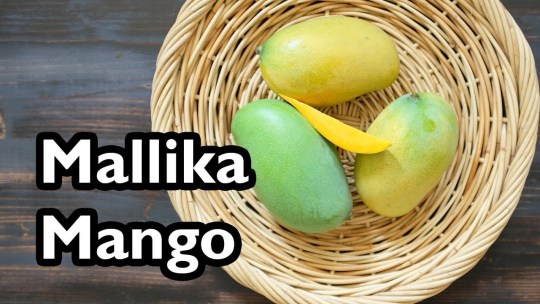
Mallika mangoes are an Indian variety crossed between Dasheri base and Neelum graft. The fruits are medium-sized, with a very thin seed and a generous amount of sweet pulp.
Mallika Mango: Origin and Characteristics
Mallika mangoes are believed to have originated in India and get their name from the Sanskrit word for “queen”. Mallika mangoes are an Indian variety crossed between Dasheri base and Neelum graft. Mallika mangoes are available from May to July.
These bright yellow fruits have a distinctively curved shape and a smooth, thin skin. The flesh is firm, juicy, and sweet with a hint of sourness. It contains a large, oval-shaped seed. Mallika mangos are often used in Indian cuisine. They can be eaten fresh or used in juices, smoothies, desserts, and chutneys. Because of their thin skin, they’re also easy to peel and chop.
How to Enjoy Mallika Mangoes
Summer is the perfect time to enjoy delicious, juicy mangoes and there’s no better variety than the Mallika mango. This guide will teach you how to pick, store, and prepare Mallika Mangoes so you can enjoy them at their peak of ripeness.
When shopping for Mallika Mangoes, look for fruit that is soft to the touch and free of blemishes. The skin should also give slightly when pressed. Avoid any mangos that are hard and bruised.
To store your Mallika Mangoes, keep them at room temperature until they’re ripe. Once ripe, they can be stored in the fridge for up to a week. To speed up the ripening process, place mangos in a paper bag with an apple or banana.
Nutritional Value of Mallika Mangoes
Mallika mangoes are not only delicious, but they are also packed with nutrients that can benefit your health. Just one mango contains over 20 different vitamins and minerals, including Vitamin C, beta-carotene, and potassium.
Mangoes are a good source of fiber, which can help to promote digestive health and prevent constipation. The antioxidants in mangoes can also help to protect your cells from damage and may boost your immune system.
Eating mangoes may also help to lower cholesterol levels and reduce the risk of heart disease. Some research has shown that the compounds in mangoes can help to inhibit the growth of cancer cells.
If you're looking for a nutritious fruit to add to your diet, Mallika mangoes are a great option. Not only will they give you a delicious treat, but they can also provide many health benefits.
Health Benefits of Eating a Mallika Mangoes
The Mallika mango is a rich source of vitamins A and C, as well as dietary fiber. The fruit has been shown to have numerous health benefits, including improved digestion, reduced inflammation, and protection against heart disease and cancer.
Eating a Mallika mango can also help boost your immune system, due to the presence of antioxidants and phytochemicals. These nutrients work together to fight off free radicals and prevent cell damage. Additionally, the fiber in the fruit helps to regulate blood sugar levels and promote satiety.
If you’re looking for a delicious way to improve your health, try adding a Mallika mango to your diet!
Best online store to buy Mallika Mangoes online
Mallika Mangoes are one of the most delicious and popular varieties of mangoes available in India. When it comes to finding the best place to buy Mallika Mangoes online, there are a few things you need to keep in mind. First and foremost, you want to make sure that the site you're considering is reputable and that they have a good track record when it comes to delivering fresh fruits.
Natural Mangoes is an online store that specializes in selling organic farm fresh mangoes. They have a wide variety of mangoes available, including Mallika mangoes. So, you can be sure that you will get your mangoes delivered right to your doorstep. Overall, if you are looking for a convenient and affordable place to buy Mallika mangoes online, then Natural Mangoes is the perfect choice.
Check out our top picks below and get started on your delicious Mango shopping spree today!
You can place your orders online @ https://www.naturalmangoes.com Mangoes are safely packaged and delivered to your doorstep across India.
2 notes
·
View notes
Text
The Top 5 Benefits Of Himalayan Wild Organic Honey
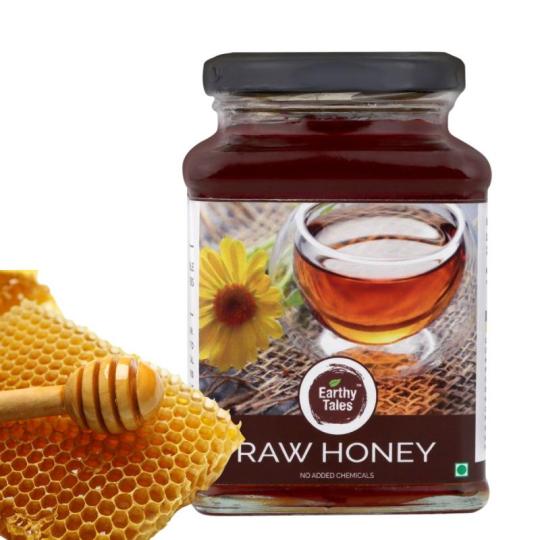
In this filtered social media world where everything is artificial, we still have a few unfiltered and organic things to cherish. The Himalayan wild organic honey is one of them. It is an unfiltered golden elixir that comes right from the land of the Himalayas. The honey is collected straight from the nectar of blossoms, wildflowers, and herbs to give an immense amount of health benefits, unlike the artificial honey available on the market. That’s why Earthy Tales brings it in a bottle of 500 grams to let you buy pure honey online in India. The best part of organic Himalayan honey is that it’s not at all processed or filtered. Hence, it has all the organic enzymes and nutrients, antioxidants, minerals, and vitamins, along with an exquisite taste and flavor.
The top 5 benefits Of Himalayan Wild Organic Honey
There are multiple benefits to Himalayan wild organic honey. However, the notable ones are:
Honey helps to improve overall health.
Unlike the artificial honey available on the market, Himalayan wild organic honey is rich in organic antioxidants, vitamins, minerals, and enzymes that offer incredible health benefits. On top of that, the anti-inflammatory and anti-bacterial properties help to reduce inflammation in the body.
It boosts energy levels.
In a contemporary world where a hectic lifestyle impacts energy levels to a great extent, Himalayan wild organic honey offers an instant spike in energy levels without causing any side effects. It can boost stamina and energy levels automatically if it’s taken consistently. The best part is that it doesn’t cause any harmful side effects in the body, like energy drinks.
It improves digestion and gut health.
The root cause of multiple health problems is poor digestion and gut health. Most health issues start with bad digestion and gut health. Hence, Himalayan pure organic honey has natural probiotics and antioxidants that can improve digestion and gut health to a great extent without causing any ill effects.
It has multiple medicinal properties.
Many people are not aware of the fact that organic Himalayan honey is rich in medicinal properties and can be taken in various ways to treat burns and wounds, stomach ailments, or to detoxify the system.
It minimizes allergies and infections.
Organic Himalayan honey has incredibly natural pollen that can drastically minimize the symptoms of seasonal allergies that can happen to anyone.
How Is Himalayan Honey Different From Regular Honey Available In The Market?
Himalayan wild organic honey contains incredibly valuable grayanotoxins, antioxidants, minerals, vitamins, and pollen that are not found in regular honey on the market. The latter contains a lot of preservatives, artificial flavors, and sugar content that are not beneficial for anyone’s health.
How Can One Use Organic Honey In Their Daily Regime?
Himalayan wild organic honey can be consumed in various ways, including:
With a morning oatmeal breakfast or afternoon tea.
With your favorite smoothie or a cup of yogurt.
With a glass of warm water in the morning on an empty stomach.
Before bed, with or without a glass of milk.
Where Can I Buy The Purest Himalayan Organic Honey In India?
The finest and purest Himalayan honey is available on Earthy Tales, a leading organic food online store. The brand helps you buy pure honey online in India that comes right from the Himalayan local apiculturists or beekeepers who have years of expertise in maintaining bee colonies in the forests. Also, the brand offers a versatile range of organic food products that are taken right from organic farms.
Source URL:- https://businessmagazineuae.com/benefits-of-himalayan-wild-organic-honey/
0 notes
Text
How to Start Organic Farming in India | Harisharan Devgan
Organic farming is an important part of sustainable agriculture. It helps to protect the environment, improve human health, and boost the economy. But some points are needed to be considered before starting organic farming in india. The government has also encouraged organic farming in India as it is beneficial for both environment and health. Licensing, regulations, and planning for every endeavor are needed just like organic farming.
Developing a well-structured organic farming business plan is essential for successfully launching and operating your organic farm. By addressing the key components outlined above, you can navigate the organic market, attract investors, and establish a sustainable and profitable organic farming venture. Remember to regularly review and update your business plan to adapt to changing market conditions and opportunities.
#How to Start Organic Farming in India#farmer#agripreneur#agriculture#farming#organicfarmer#agriculture technology#organicfarmerofmillionaire#cannabisresearch#farmingtechnologies#agriculturetechnology#Organic Farming in India
0 notes
Text
Discover the Health Benefits of KP E-Mart Organic Ragi Flour
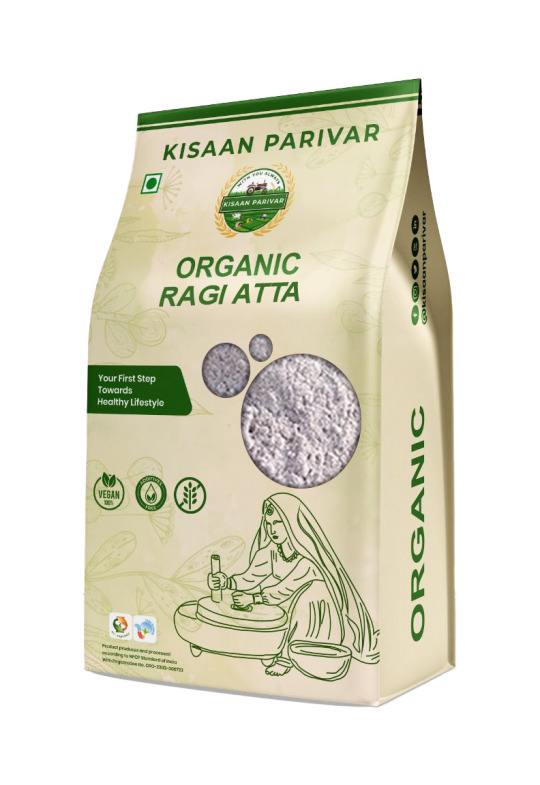
In the realm of healthy eating, ancient grains are making a remarkable comeback. One such powerhouse is ragi, also known as finger millet. Renowned for its impressive nutritional profile, ragi has been a staple in many traditional diets. KP E-Mart brings this superfood to your table with its Organic Ragi Flour, ensuring quality and purity in every grain.
What is Ragi?
Ragi, scientifically known as Eleusine coracana, is a nutrient-dense grain native to Africa and widely cultivated in India. It is celebrated for its rich content of calcium, iron, protein, and dietary fiber. Ragi is also gluten-free, making it an excellent choice for those with gluten sensitivities or celiac disease.
Why Choose KP E-Mart Organic Ragi Flour?
KP E-Mart stands out for its commitment to providing high-quality organic products. Their Organic Ragi Flour is no exception, offering several key benefits:
Certified Organic: KP E-Mart’s ragi flour is sourced from certified organic farms, ensuring it is free from harmful pesticides and synthetic fertilizers. This commitment to organic farming supports environmental sustainability and promotes better health.
2. Nutritional Powerhouse: Packed with essential nutrients, KP E-Mart Organic Ragi Flour is an excellent source of calcium, which is vital for bone health. It also contains significant amounts of iron, aiding in the prevention of anemia, and is rich in dietary fiber, promoting digestive health.
3. Versatile Ingredient: Organic ragi flour is incredibly versatile and can be used in a variety of recipes. From traditional dishes like ragi porridge and rotis to modern creations like pancakes, cookies, and bread, the possibilities are endless.
4. Gluten-Free: Being naturally gluten-free, KP E-Mart Organic Ragi Flour is perfect for individuals with gluten intolerance or those looking to reduce gluten in their diet. It offers a nutritious alternative to wheat and other gluten-containing grains.
5. Supports Weight Management: Ragi has a low glycemic index, which means it releases sugar slowly into the bloodstream. This helps in maintaining stable blood sugar levels and keeps you feeling full for longer, aiding in weight management.
How to Use KP E-Mart Organic Ragi Flour
Incorporating KP E-Mart Organic Ragi Flour into your diet is simple and delicious.
Ragi Porridge: A wholesome breakfast option, ragi porridge is easy to prepare and can be sweetened with jaggery or honey for added flavor.
Ragi Rotis: Replace traditional wheat flour with ragi flour to make nutritious and filling rotis. Pair them with your favorite curries or vegetables.
Ragi Pancakes: Create delicious and healthy pancakes by mixing ragi flour with eggs, milk, and a pinch of baking powder. Top with fresh fruits and a drizzle of maple syrup.
Ragi Cookies: For a healthy snack, bake cookies using ragi flour, oats, and dark chocolate chips.
Conclusion
KP E-Mart Organic Ragi Flour is more than just a health food trend; it’s a return to wholesome nutrition and sustainable living. By choosing KP E-Mart, you are not only opting for a product that is good for your health but also supporting environmentally friendly farming practices. Embrace the benefits of this ancient grain and discover how easy and delicious healthy eating can be with KP E-Mart Organic Ragi Flour.
Start your journey towards better health today with KP E-Mart Organic Ragi Flour — a nutritious, versatile, and organic choice for the entire family.
#KPEMart#OrganicRagiFlour#HealthyEating#Superfood#GlutenFree#AncientGrains#RagiBenefits#HealthyLifestyle#OrganicLiving#NutritionalPowerhouse#NaturalNutrition#WholeGrainGoodness#EcoFriendly#SustainableFarming#HealthyRecipes#GlutenFreeBaking#NutritiousChoices#RagiLove#OrganicChoices#FarmToTable
0 notes
Text
How to Contribute to a Better Environment in India
India, with its diverse ecosystems and vast natural resources, faces significant environmental challenges, including pollution, deforestation, and climate change. As individuals, we can make a substantial impact through our daily actions and by supporting broader initiatives. Here are some practical steps you can take to contribute to a better environment in India:
1. Reduce, Reuse, Recycle
Reduce: Minimize waste by avoiding single-use plastics and opting for products with minimal packaging. Be mindful of your consumption habits.
Reuse: Use reusable bags, bottles, and containers. Repair and repurpose items instead of discarding them.
Recycle: Separate your waste for recycling. Familiarize yourself with local recycling guidelines and participate actively.
2. Conserve Water
Fix Leaks: Ensure that all taps and pipes in your home are leak-free.
Efficient Usage: Use water-saving fixtures and adopt habits like turning off the tap while brushing your teeth.
Rainwater Harvesting: Implement rainwater harvesting systems to collect and use rainwater for non-potable purposes.
3. Save Energy
Energy-Efficient Appliances: Use appliances with high energy efficiency ratings.
Switch to LEDs: Replace incandescent bulbs with energy-efficient LED lights.
Unplug Devices: Turn off and unplug electronic devices when not in use to reduce phantom energy consumption.
4. Adopt Sustainable Transportation
Public Transport: Use buses, trains, and metros instead of personal vehicles to reduce carbon emissions.
Carpooling: Share rides with others to minimize the number of vehicles on the road.
Cycling and Walking: For short distances, opt to walk or cycle. It's not only eco-friendly but also good for your health.
5. Support and Practice Afforestation
Plant Trees: Participate in tree-planting drives and plant native species in your community.
Support Reforestation Projects: Contribute to or volunteer with organizations that work on reforestation and forest conservation.
6. Reduce Air Pollution
Avoid Burning Waste: Refrain from burning leaves, garbage, or any waste materials.
Support Clean Energy: Advocate for and support the use of renewable energy sources like solar and wind power.
Use Public Transport: As mentioned, reducing personal vehicle use helps decrease air pollution.
7. Promote Sustainable Agriculture
Organic Farming: Support and purchase organic products that are free from harmful pesticides and fertilizers.
Community Gardens: Participate in or start community gardens to grow local, organic produce.
8. Educate and Raise Awareness
Community Involvement: Engage with local environmental groups and participate in community clean-up drives.
Spread Knowledge: Educate your friends, family, and community about environmental issues and sustainable practices.
Social Media: Use social media platforms to raise awareness about environmental conservation and sustainable living.
9. Support Environmental Policies
Stay Informed: Keep up with local and national environmental policies and regulations.
Advocacy: Support and advocate for stronger environmental laws and policies. Participate in public consultations and express your views to policymakers.
Vote Wisely: Elect representatives who prioritize environmental sustainability and climate action.
10. Reduce Carbon Footprint
Dietary Choices: Reduce meat consumption as livestock farming is a significant source of greenhouse gases. Opt for a plant-based diet whenever possible.
Eco-friendly Products: Choose products that are sustainably sourced and have a lower environmental impact.
Join SK Vision For a Better Future
By integrating these practices into your daily life, you can play a vital role in creating a more sustainable and environmentally-friendly India. Small actions, when multiplied across a community, can lead to significant positive changes. Together, we can ensure a healthier planet for future generations.
0 notes
Text






















World Milk Day
Start your day with a glass of calcium-rich milk, visit a local dairy farm, or see what milk alternatives like soy, oat, or almond milk you might enjoy.
It’s a well-known fact that milk is rich with calcium, a mineral that promotes healthy teeth and bones. June 1st is the date that has been set aside to celebrate Milk Day. And, of course, this is a celebration that can take place anywhere in the world, given that milk is a global food!
The use of milk in food and drink has been happening for thousands of years. As most people can appreciate, milk is an integral part of most people’s daily lives, and there’s an entire industry that revolves around it as well.
Milk is a liquid food rich with nutrients like calcium. It’s a food product that is primarily used by mammals during infancy. Although, in the case of humans, people tend to consume it in adulthood, as most adult humans can digest the lactose in milk.
Of course, milk isn’t only available for drinking. It’s an essential ingredient for dairy foods such as butter, cream, ice cream, and cheese. Milk can also be found as an ingredient used in other types of foods, such as bread, cakes, cereal, desserts and so much more.
There is no denying that milk has become a mainstay of most people’s diets today. It’s also one of the cheapest food products to buy, given the industrial scale of milk production in the world. Some of the largest producers of milk are the United States, India, and China.
History of Milk Day
Milk Day became a globally celebrated event on June 1st, 2001. The global celebration, in general, can be traced back to the United Nations (UN). In particular, the FAO (Food and Agriculture Organization) of the UN has been responsible for organizing and marketing World Milk Day throughout the globe.
More than two decades ago, the FAO proposed a global Milk Day to recognize the importance of milk and the role that it plays in our world. In addition, this day was also created to provide direct focus to the milk industry and publicize the various activities connected with it. In fact, the dairy industry supports the livelihoods of approximately 1 billion people throughout the world!
But even before this day was created in 2001, Milk Day was celebrated by some other nations throughout history. In the British Isles, for example, a Milk Day celebration (“Imbolc” – Celtic for “milk”) took place in the pre-Christian era.
Considering the fact that over six billion people worldwide consume milk and dairy, it’s no surprise there was a need to celebrate this healthy, delicious beverage!
How to Celebrate Milk Day
June 1st is a day that many people may want to write their diaries. Milk plays such a significant role in the world that should certainly be celebrated in style!
But what can be done to celebrate such a momentous occasion? Try out some of these ideas for enjoying Milk Day:
Get the Day Started with a Glass of Milk
Why not celebrate today with a glass of fresh, cold milk in the morning to kick-start the day?! But don’t stop there. How about enjoying a big bowl of cereal full of delicious milk?
Of course, after drinking that glass of milk, don’t forget to snap a photo of that beautiful milk mustache! Share it with the world on social media to remind everyone else to enjoy Milk Day too.
Join an Official Milk Day Celebration
As a worldwide event, Milk Day comes with all kinds of official opportunities to celebrate! In 2020, more than 400 Milk Day campaigns took place in over 68 countries all over the globe, so there should be plenty to join in with again this year. Here are some events that have taken place in previous years:
World Milk Day Milk Donation. Happening in New York State, USA, several organizations have gotten together to provide a free gallon of milk to the people in their local community who visit a dairy farm.
Live Recipes by Renowned Chefs from Around the World. This live Facebook event has been hosted by Amul, India, which is the country’s largest dairy brand, with the intention of showing the importance of milk throughout different countries and cultures.
International Dairy Federation Raise a Glass Event. Hosted by the IDF in Brussels, Belgium, this event involved hosting a toast to milk from people all around the world.
Check the World Milk Day website to get access to all the needed information to make plans for this day.
Visit a Local Dairy or Farm
For those who have some extra time, especially those with kids who are ready to learn, consider visiting a local dairy to learn the process of milking cows and collecting the milk. This will also lead to learning about pasteurizing and homogenizing milk, methods used to filter milk and keep it long-lasting.
If there are no cow farms nearby, consider visiting a smaller farm that has goats. It’s still possible to learn about everything milk-oriented but may be more accessible because they might be smaller and locally owned.
Enjoy Other Milk Products
For lunch, why not have a mozzarella or Margherita pizza and drink a glass of chocolate milk to wash it down? After that, those who are still feeling hungry could always have some delicious ice cream for dessert!
Other options for enjoying milk products on this day (and every day!) include yogurt, sour cream, butter, custard, cream and all of the recipes that can be made from them.
Try a Milk Alternative
For folks who have trouble digesting dairy easily, why not try other non-dairy milk alternatives? Here are some popular options:
Soy Milk. A favorite as one of the early milk alternatives, this one is made from soybean plants that grow fairly prolifically in many places.
Almond Milk. Made by crushing almonds and blending them with water, and then straining out the mix to remove any solids that are left, this nutty milk is filled with protein.
Coconut Milk. This one uses the white, fleshy part of the coconut, grating it and soaking it in water. The cream rises and is skimmed off, then what’s left is strained to extract the coconut milk.
Whether with a milk product or a dairy alternative, celebrating World Milk Day can be loads of fun!
Source
#chocolate cake#Rice pudding with cinnamon#flan de huevo#Pudim flan#Crème caramel#chocolate pie#whipped cream#dessert#Spain#travel#original photography#summer 2021#vacation#World Milk Day#1 June#WorldMilkDay#Princess cake#Strawberry Shortbread#USA#Strawberry Milkshake#Chocolate Banana Milkshake#Berries&Cream#Coconut Cream Pie#Banana Cream Pie#Strawberry Cheesecake Milkshake#Pecan Praline Milkshake#food#restaurant#Coconut Cream Pie Cheesecake#Pecan Pie
1 note
·
View note
Text
How to Start Your Own Organic Agriculture Company in India

The organic farming sector is witnessing significant growth in India, driven by increasing consumer awareness about health and environmental sustainability. Starting your own organic agriculture company in India can be a rewarding venture, both financially and ethically. This guide will walk you through the essential steps to establish and grow your organic farming business, ensuring you make informed decisions along the way.
Understanding Organic Farming:
Before diving into the business, it’s crucial to understand what organic farming entails. Organic farming avoids synthetic chemicals, relying instead on natural processes and inputs to cultivate crops. This method promotes soil health, biodiversity, and sustainability, making it an attractive choice for modern consumers.
Steps to Start Your Own Organic Agriculture Company in India:
1. Market Research and Planning:
Begin by conducting thorough market research. Understand the demand for organic products in your target area, identify your competition, and determine what crops are most in demand. This research will help you develop a robust business plan, outlining your business goals, target market, marketing strategy, and financial projections.
2. Selecting the Right Location:
The success of your organic farming business largely depends on choosing the right location. Look for land with fertile soil, adequate water supply, and favorable climatic conditions for the crops you plan to grow. It’s also beneficial to be near markets where you can sell your produce.
3. Certification and Legal Requirements:
To sell your produce as organic, obtaining certification is mandatory. In India, the Agricultural and Processed Food Products Export Development Authority (APEDA) regulates organic certification. Familiarize yourself with the National Programme for Organic Production (NPOP) standards and apply for certification through an accredited agency. Ensure you comply with all legal and environmental regulations to avoid any future hassles.
4. Sustainable Farming Practices:
Implement sustainable farming practices that align with organic farming principles. Use organic seeds, natural fertilizers like compost and manure, and eco-friendly pest control methods. Crop rotation, polyculture, and green manure are essential techniques to maintain soil health and fertility.
5. Building a Knowledgeable Team:
Having a team knowledgeable in organic farming practices is crucial for success. Hire or train staff in organic farming techniques, soil management, and pest control. Continuous education and training will help your team stay updated with the latest organic farming trends and innovations.
6. Infrastructure and Equipment:
Invest in essential infrastructure and equipment needed for organic farming. This includes irrigation systems, storage facilities, composting units, and farming tools. Efficient infrastructure and modern equipment can significantly enhance productivity and reduce labor costs.
7. Marketing and Sales Strategy:
Develop a strong marketing and sales strategy to reach your target audience effectively. Utilize digital marketing, social media, and local farmers' markets to promote your products. Highlight the benefits of organic produce, such as health advantages and environmental sustainability, to attract health-conscious consumers.
8. Building Relationships:
Establish strong relationships with suppliers, retailers, and customers. Networking with other organic farmers and joining organic farming associations can provide valuable insights and support. Collaborating with local restaurants, supermarkets, and online platforms can also expand your market reach.
9. Continuous Improvement:
Organic farming is a dynamic field with continuous advancements in techniques and practices. Stay updated with the latest research, attend workshops, and be open to adopting new methods that can improve the quality and yield of your produce.
Conclusion:
Starting your own organic agriculture company in India is a fulfilling endeavor that requires careful planning, dedication, and continuous learning. By following these steps, you can establish a successful organic farming business that meets the growing demand for sustainable and healthy food. Companies like Kavya Organic Farm serve as excellent examples of how commitment to organic farming principles can lead to a thriving business. Embark on your journey to contribute to a healthier planet and a more sustainable future by starting your own organic agriculture company in India.
0 notes
Text
Unlocking Opportunities: Farm Land Property Buying in Hyderabad, India
In the heart of South India lies a city where modernity meets tradition, where bustling urban life coexists with serene countryside landscapes – Hyderabad. Known for its rich history, vibrant culture, and burgeoning tech industry, Hyderabad is also emerging as a hotspot for real estate investment, particularly in farm land properties. With Smartkey Agency leading the way, let’s explore why investing in farm land in Hyderabad is a smart move.
Hyderabad: A City of Promise
Hyderabad, the capital of Telangana state, has witnessed rapid growth in recent years, fueled by its robust economy and infrastructural development. The city's strategic location, favorable climate, and proactive government policies have made it an attractive destination for investors seeking high returns.

The Allure of Farm Land Properties
Amidst the urban sprawl, farm land properties in Hyderabad offer a tranquil retreat and a promising investment opportunity. Whether you're a seasoned investor or a first-time buyer, here's why farm land properties should be on your radar:
Appreciating Asset: Unlike urban properties, which may face saturation or market fluctuations, farm land properties tend to appreciate steadily over time. With growing demand for organic produce and eco-friendly living, the value of agricultural land in Hyderabad is poised to soar.
Diverse Investment Options: Hyderabad boasts a variety of farm land options, ranging from small plots for personal use to expansive estates for commercial farming or development projects. Smartkey Agency's extensive portfolio ensures that investors can find the perfect property to suit their goals and budget.
Potential for Passive Income: Farm land investments offer more than just capital appreciation – they can also generate passive income through agricultural activities or leasing arrangements. With Hyderabad's fertile soil and abundant water resources, cultivating crops or renting out land to farmers can provide a steady stream of revenue.
Hedging Against Inflation: In an uncertain economic climate, tangible assets like farm land serve as a hedge against inflation and market volatility. By diversifying your investment portfolio with agricultural holdings, you can safeguard your wealth and enjoy long-term financial stability.
Why Choose Smartkey Agency?
As Hyderabad's premier real estate agency, Smartkey stands out for its commitment to excellence, integrity, and customer satisfaction. Here's how we can help you make the most of your farm land investment:
Expert Guidance: Our team of seasoned real estate professionals has in-depth knowledge of the local market trends, regulatory landscape, and investment opportunities. We'll work closely with you to understand your objectives and guide you through every step of the buying process.
Tailored Solutions: At Smartkey, we understand that every investor is unique. Whether you're seeking a picturesque farm retreat or a high-yield agricultural venture, we'll customize our services to meet your specific needs and preferences.
End-to-End Support: From property identification and due diligence to legal documentation and post-sale assistance, Smartkey provides comprehensive support at every stage of your investment journey. Our goal is to ensure a seamless and rewarding experience for our clients, from start to finish.
Unlock Your Potential with Smartkey
Don't miss out on the opportunity to own a piece of Hyderabad's agricultural paradise. With Smartkey Agency by your side, you can embark on a journey of prosperity and fulfillment. Contact us today to explore our wide range of farm land properties and take the first step towards realizing your investment dreams.
Address
1st Floor, Sai Madhu Towers, Opp: Cyber Towers, Madhapur, Hyderabad, India, Telangana
Contact Us
(+91) 8688942985
0 notes
Text
What are the different types of seeds in gardening?

Growing plants using seeds can be intimidating, especially if the seeds do not germinate or if the plants do not grow well. Hence, one must choose the best organic seeds online in India. It is also essential to know the extensive varieties of plant seeds available, how to choose the right type, and how daunting it can be. Plant seeds available at a plant nursery in Mumbai are available in extensive types like organic, non-GMO, heirloom, standard, etc. If you are unsure about choosing the right types of seeds, the following article will help you understand the difference between different types of seeds for your garden.
Different types of seeds
Ratanshi Agro-Hortitech features the following types of seeds:
Heirloom seeds
These types of seeds are natural and come from natural open pollination. It means these seeds undergo pollination by breeze, insects, or self-pollination. Additionally, these seeds do not undergo genetic modification. These seeds are passed on for over 50 to 100 years.
Hybrid seeds
These seeds are produced under a controlled process to create a better plant variety. These seeds are produced to create a new plant variety using crossbreeding between two plants and using their top qualities. These seeds can provide extensive plant varieties.
Open Pollinated seeds
These plant seeds available at a plant nursery in Mumbai come from open pollination using natural sources like pollinators, wind, and insects. The offspring of these seeds are similar to their parent seeds. It is essential to note that all heirloom seeds are open-pollinated, however not all open-pollinated seeds are heirloom seeds, as these seeds can be new seeds of the original plants. However, over time, these plant seeds can be called heirloom seeds.
Organic seeds
These seeds come from farms containing crops grown using organic farming techniques. The crops do not utilize pesticides or GMO technologies. Organic seeds can produce strong seeds with enhanced properties and are disease-resilient. These seeds can survive in extreme conditions. These seeds are perfect for gardeners looking to practice organic gardening.
GMO seeds
Genetically modified seeds are made in labs to produce seeds with desirable qualities. The seeds are injected with desired genes from different plant species to get their benefits. For instance, the plant undergoes modification to survive dry weather or resist insects and pests. However, it is essential to note that these products aren't a result of cross-pollination and are made in labs under a controlled atmosphere using gene modification. GMO seeds are mostly used for commercial farming to produce large-scale crops.
Treated and untreated seeds
Seeds tagged as treated seeds often have chemical or fungicide applications to protect them from diseases or pests. Untreated seeds, on the other hand, do not have this application. However, it is essential to note that treated seeds of fruits and vegetables are 100 percent safe for consumption.
Which seeds should I select?
Gardening offers a great experience in the form of physical exercise and rewards in the form of good health and healthy produce for consumption. However, a healthy garden comes down to the basics. From healthy organic seeds to high-quality gardening supplies, one needs to research before they start. The first step involves choosing a reputed plant nursery that offers high-quality organic seeds online in India. Once you have sourced the seeds for your garden from varieties like heirloom, hybrid, non-GMO, organic, and standard, you can start growing multiple vegetables in your home garden.
If you are unsure about choosing the right seed type for your garden, consult experts at Ratanshi Agro-Hortitech, a leading plant nursery in Byculla. The online nursery in Mumbai offers river sand for plants, Bavistin fungicide, musk melon tree, and live plants online in Mumbai. For more details, contact them today!
#organic seeds online india#vegetable seeds online#seeds online mumbai#cauliflower seeds#carrot seeds
0 notes